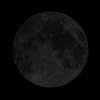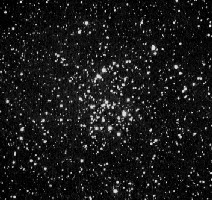Courtesy of EarthSky
A Clear Voice for Science
Visit EarthSky at
www.EarthSky.org [1]
 [2]
[2] [3]You will need a very dark sky to see the constellation Monoceros the Unicorn on these cold January nights.
[3]You will need a very dark sky to see the constellation Monoceros the Unicorn on these cold January nights.
How can you find the Unicorn? Focus in on the bright stars Betelgeuse [4], Sirius [5] and Procyon [6]. They make a triangle, sometimes called the Winter Triangle. Within this triangle of stars, hidden in between the many bright and glittering stars and constellations visible at this time of year, there is a constellation as elusive in our night sky as its namesake is in countless fairy tales.
This is the constellation Monoceros the Unicorn. You will need a very dark sky to see it.
Like all of the night sky, the region of the heavens around Monoceros holds interest. The winter Milky Way runs through here, so it is a good place to scan with binoculars.
 [7]With binoculars, you can see star clusters here. Those with dark skies might try drawing an imaginary line from the star Sirius to Procyon. About a third of the way along this line, you will find a hazy object – an open star cluster – called M50. This object needs a telescope to show it clearly. However, it is wonderful to contemplate this cluster of stars on a winter night. There are about 100 stars in the little patch we know as M50. The main part of the cluster is about 10 light-years across. The entire cluster is located some 3,000 light-years from us. (M50 image from The Munich Astro Archive)
[7]With binoculars, you can see star clusters here. Those with dark skies might try drawing an imaginary line from the star Sirius to Procyon. About a third of the way along this line, you will find a hazy object – an open star cluster – called M50. This object needs a telescope to show it clearly. However, it is wonderful to contemplate this cluster of stars on a winter night. There are about 100 stars in the little patch we know as M50. The main part of the cluster is about 10 light-years across. The entire cluster is located some 3,000 light-years from us. (M50 image from The Munich Astro Archive)
Treat yourself to a visit with a mythical beast – Monoceros the Unicorn – in the winter sky. See it now, before the waxing moon takes the darkness out of the evening night sky!
![]() [8]Written by Deborah Byrd [9]
[8]Written by Deborah Byrd [9]
Astronomy Picture of the Day from NASA/JPL [10]
CHANDRA Photo Album [11]
U.S. Naval Observator Astronomical Information cente [12]r
Universe Today [13]
StarDate Online [14]
Sky and Telescope [15]
National Geographic [16]
Space Com [17]
Simostronomy Blog [18]
Amazing Space [19]
The York County Astronomical Society [20]
Scope City [21]